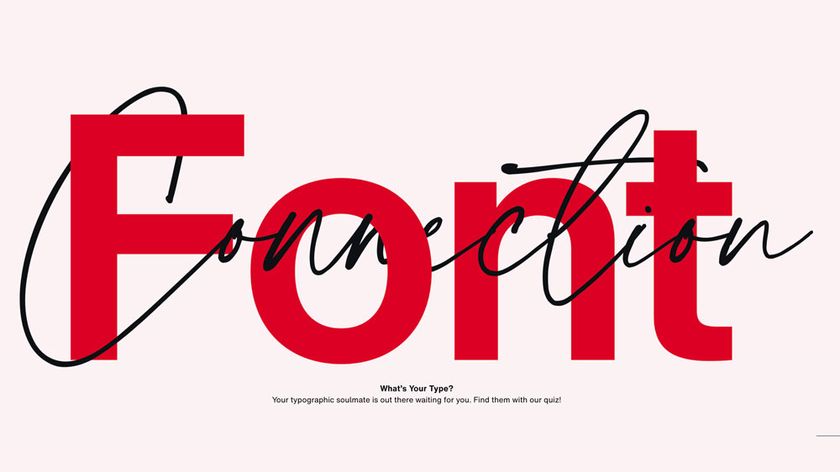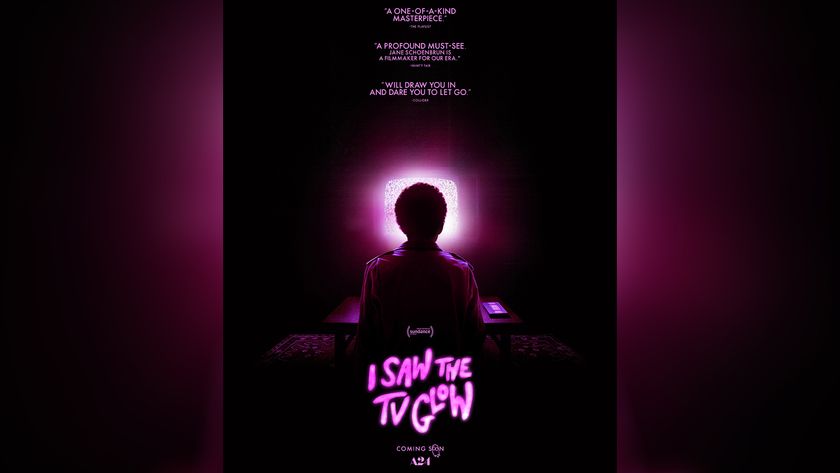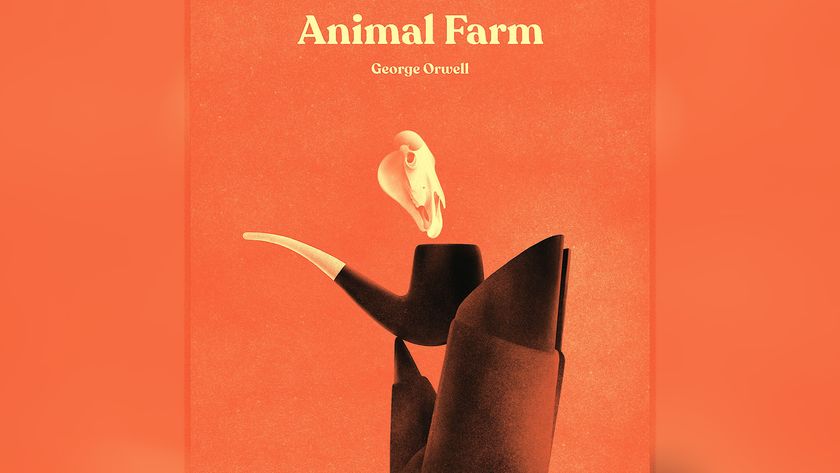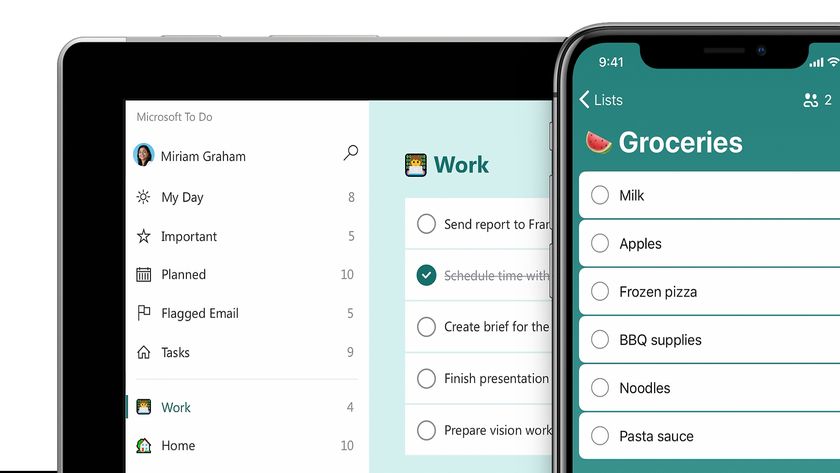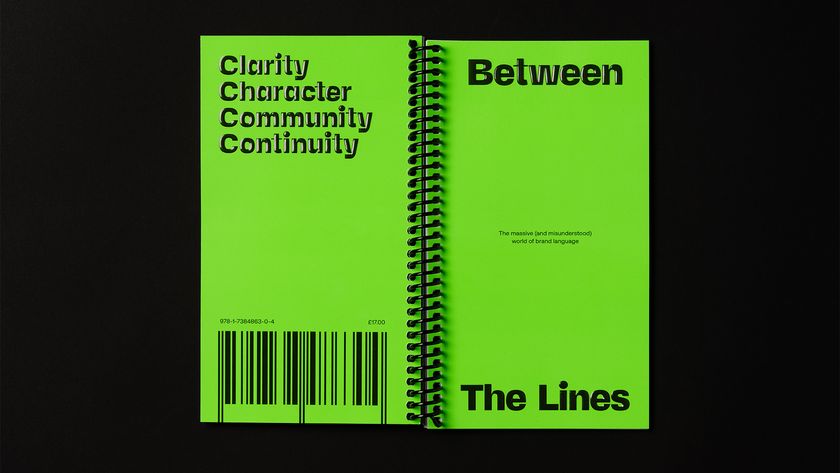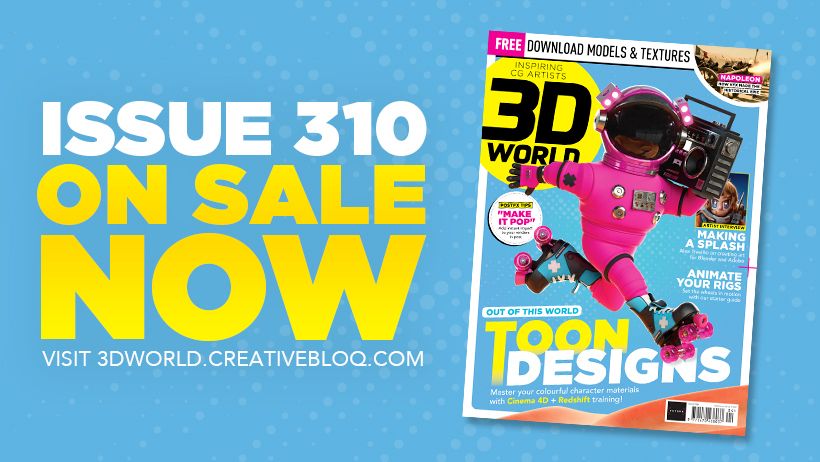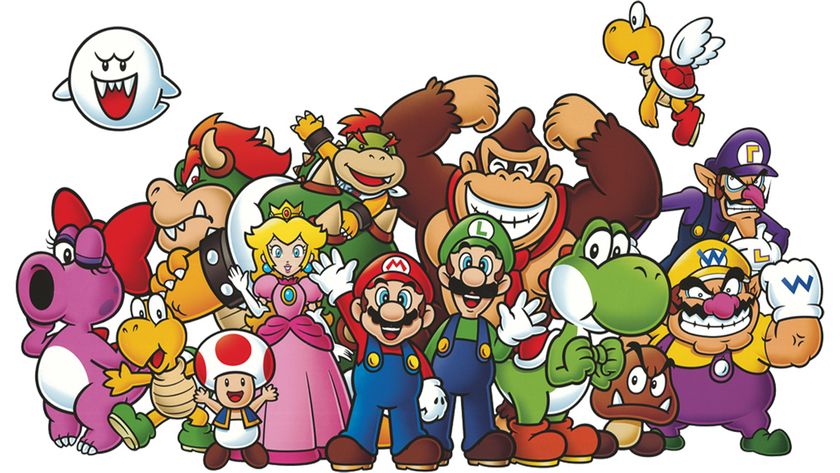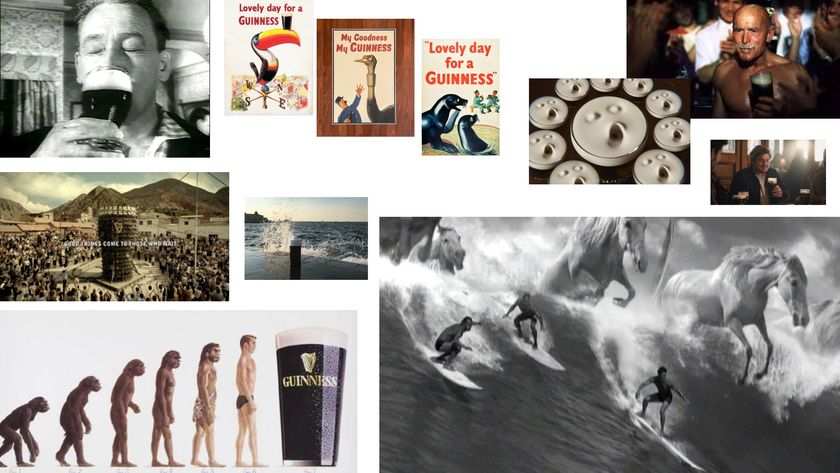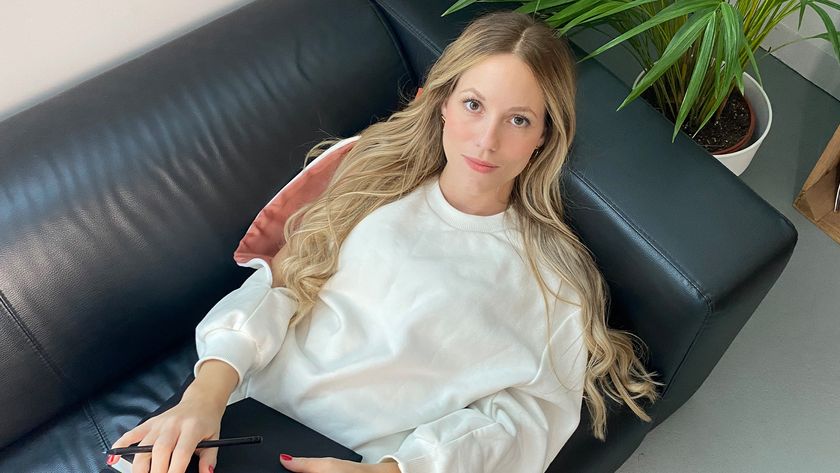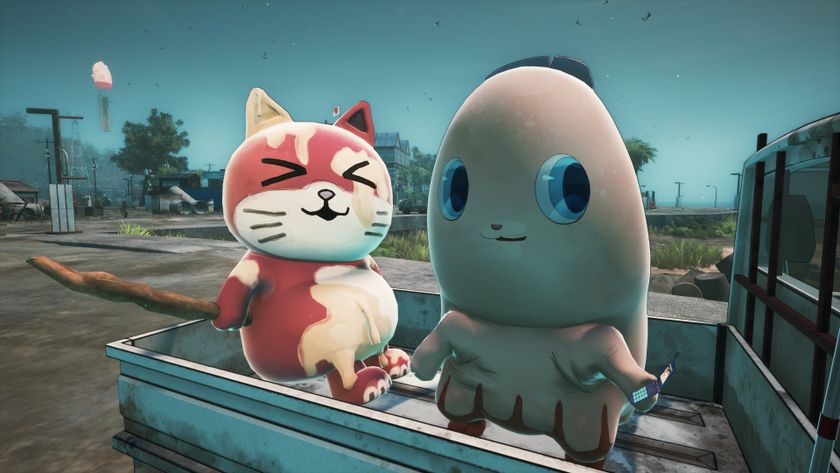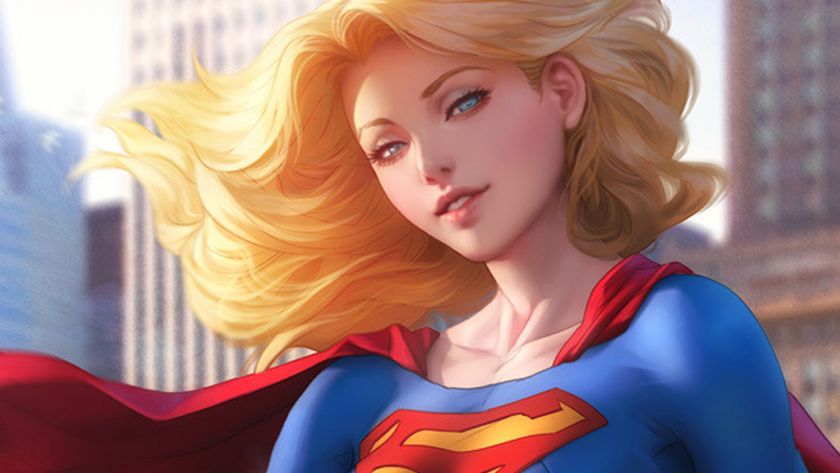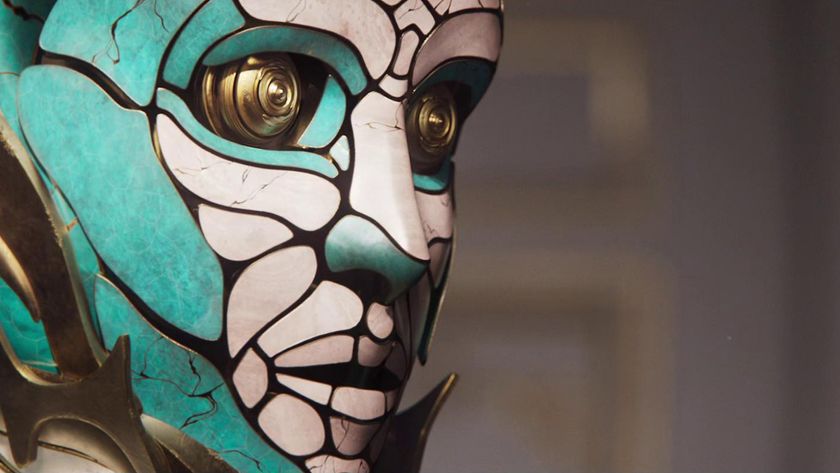How to get commissioned by the world's super-brands
Find out what it takes to get on the creative radars of Google, Nike and MTV.
Poised at the cutting-edge of design and technology, Nike, MTV and Google are responsible for some of the most powerful campaigns of recent times. With expert in-house marketing teams and a reputation for game-changing creative, it's little wonder the three are continually voted among the world's most desirable clients by the planet's biggest agencies.
But times are changing. These days, global clients are increasingly choosing to work directly with smaller studios and freelancers. And while the world's superbrands continue to collaborate closely with internationally established agencies, their in-house design teams are just as likely to commission a creative directly.
"It's a different business model," reflects Michael Spoljaric, design director, Nike Art Department. "Nike has evolved over the past five years to be very self-sufficient from a marketing, advertising and communication standpoint," he continues. "The world is small so it's easier to connect dots."
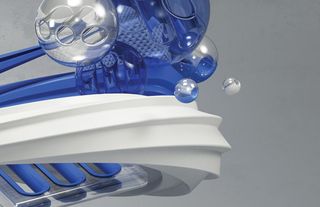
Over the past decade, hundreds of Spoljaric's ideas have been realised through close-knit collaborations with some of the industry's most exciting creative talent, including boutique Lithuanian VFX studio Korb, Berlin-based Hort and talented 3D designer Rizon Parein, who's based in Belgium. "We're very busy but we're not a very big team, so we have to work with people with specific skillsets to give us what we want," he explains.
"There's no set formula though. I've worked with a variety of agencies: some, like Hort, I've worked with consistently and then there's somebody like Rizon, who I only started working with a year ago. Sometimes you have to grab these people on the outside. I look at myself almost like the puppet master: I take someone's skillset and just connect the dots."
The dots, for Spoljaric, often involve a very clear idea of the final creative right from the start of a new project – and he isn't afraid to work closely with a collaborator to realise his vision.
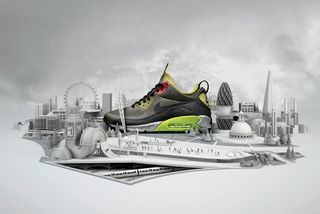
He knew, for example, that his Nike Air Max 90 Sneakerboot campaign with 3D artist Chris Labrooy would feature a series of oversized shoes set in miniature cityscapes. "I pick people that can add something to it," he explains, "where it's a little bit of a surprise to me. The endgame isn't necessarily 100 per cent what I pictured – but it pretty much is."
Get the Creative Bloq Newsletter
Daily design news, reviews, how-tos and more, as picked by the editors.
Building trust
Nike's known for demanding the very best from its partners. Creative freedom varies depending on the product, brief, department and level of trust a partner studio has built. "We began working with Nike in North America via an introduction from an art director I worked with a few years earlier, here in Melbourne," says Andy Sargent, creative director at Australian branding and design studio SouthSouthWest.
Over time, the company has developed an intricate understanding of when and where it can best innovate with Nike. "The best advice from a briefing session a year or so ago was: 'Just make it amazing'," says Sargent, highlighting two recent NBA All Star environmental design projects among his favourite commissions.
"It was the first time we were able to push ideas really far in creating an immersive event experience with so many layers of storytelling, from physical to digital."
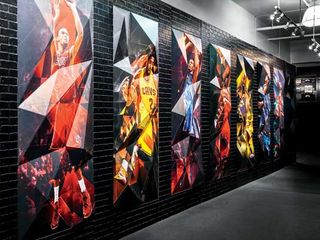
"I don't think it's any coincidence that our best work is for people like Nike, who give us some free reign," says Mike Alderson, co-founder of London-based design and motion studio ManvsMachine and regular Nike collaborator. The studio's recent Mercurial Superfly spot pushed creative boundaries, using cutting-edge 3D scanning techniques to promote Nike's World Cup boot.
ilovedust senior designer Matt Howarth agrees: "Everyone's in the same mindset – everyone wants to create the best possible work and be innovative at the same time. We're all aiming for the same goal."
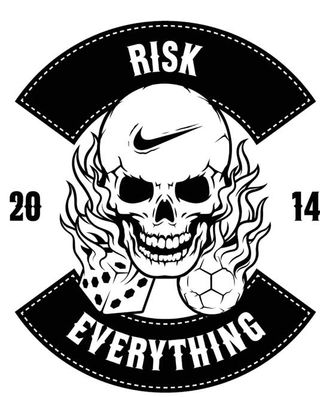
Based on England's south coast, ilovedust has worked extensively with Nike since first collaborating on a Jordan x Levis 501 illustration seven years ago. In the past few months alone the studio has worked with Wieden+Kennedy and Nike Brand Design to produce the logomark, large-scale murals and a library of illustrations for Nike's 2014 football campaign, Risk Everything, an international project spanning television, print, out-of-home and online. "They just wanted a cool 'badass' logo – that's a common Nike term, they say 'badass' a lot, which always makes us chuckle," he says.
As part of the campaign, the studio also worked on visuals to launch national team kits for seven of the 10 Nike-sponsored teams in the 2014 FIFA World Cup, plus visuals to launch next season's kits for 17 of Europe's biggest clubs, including Manchester Utd and Barcelona.
It's been a busy year for ilovedust. So busy, in fact, the studio is looking to open a permanent office in Portland – as has digital agency AKQA – near Nike's World Headquarters. "It'll take some of the pressure off us over here, especially in the evenings, and will let us work face-to-face with the client on a more regular basis," he explains.
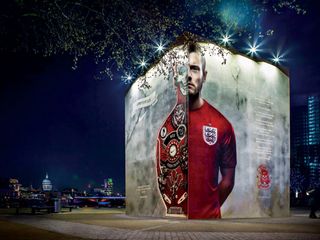
Long hours and intense project cycles are to be expected on any large-scale campaign operating across different timezones. But there's another potential fallout from working with big clients at high levels: you can't always show the project. If – like many creatives – you rely on your current work to win new business, this can prove problematic.
"The contracts get tighter and more scary," says Alderson. "We try to negotiate a two-week grace period for them to show the projects before we do. They're often fine with it. They're reasonable people."
Global reach
To get onto the creative radar of a client like Nike, Alderson recommends playing to your strengths and developing your own style. If you're talented, the right people will notice.
Nike's Michael Spoljaric agrees: "I spend a lot of time talking to people, researching and just looking online." As he says, it's all about relationships: "Commerce is important, but at the same time I'm trying to cultivate friendships. It's not just stacking business cards. It's important to build relationships."
At MTV, the same is true. The iconic network influenced an entire generation when it launched as a nonstop music channel in 1981. Three decades on – and endless pioneering formats and initiatives later – the Viacom-owned brand might not have the same monopoly on the cool stakes it once did, but MTV continues to innovate and experiment across a multitude of platforms.
Campaigns play out over TV, social media and events, while broadcasting has become a 360-degree experience enabling viewers to interact with content via web, tablet and mobile. From branding and advertising to broadcast, motion, interactive and beyond, each year the network commissions a vibrant smorgasbord of creative skillsets and styles from partner studios and freelancers around the world. And its audience is vast: with over 70 channels, MTV reaches over 500 million households in some 170 territories.
For London-based animation studio Golden Wolf, working with MTV is an opportunity to flex the team's creative guns: "MTV doesn't really have a client to please or a product to sell as such," suggests creative director Ingi Erlingsson, "so there's an awful lot of freedom to experiment and sometimes go a little more leftfield than you might on your average commercial project. This means we can approach the projects as we would our personal work, which in turn gives us the ammunition to push these new styles on other projects."
The studio's first collaboration with MTV saw Golden Wolf creating a psychedelic 30-second spot for MTV Milan. "I'm not exactly sure how they heard of us, but they called us up and asked if we'd be interested in working with them on a project," recalls Erlingsson.
"The guys at MTV are pretty savvy and always have their finger on the pulse, so as long as you're pushing your work out there on blogs and in magazines, odds are you'll get on their radar before long."
For German studio Sehsucht, it's a similar story. "MTV World Design Studio had seen our work on the internet and got in touch out of the blue," recalls director Mate Steinforth, who has since partnered with the network on a number of projects. His favourite is Sehsucht's 2012 animated show package for MTV's European Music Awards.
"They approached us with a brief calling for 'visual overload' and we came back with the Zoetrope idea, which was completely different from the references they had in their brief, but they liked it and went with it. The project had a million little snippets but it was a lot of fun. The working relationship was great – we visited them in Milan." He laughs: "We went bowling together, but lost big time."
I want my MTV
At MTV International, approximately half the creative is developed in-house, with the rest produced through collaborations with partner creatives. And while the team has a roster of collaborators – including PepperMelon, Plenty and Pogo in Buenos Aires alone – who are familiar with the brand and can be relied on when timeframes are tight, everyone on the team is responsible for finding new talent.
"We're always searching for young and talented studios across the globe that provide a fresh approach to creativity," says Sean Saylor, vice president and creative director, MTV International. "A strong portfolio or reel is what we look for; it doesn't have to be commercial work. We're looking for creatives who push things to the next level: that might be a new style or a new technique or a new way of using something that's always been there."
It isn't about a fancy client list: "We want to see the work," Saylor reiterates. "Create amazing work, share it online, give feedback, collaborate with others and become a part of the community."
"I remember watching the animated short, Parallel Parking, by Yum Yum London in 2010. At the time I don't think they even had a proper site. We found an email address and our producer got in touch with them. After a phone call we knew we wanted to work with them."
One of Saylor's favourite recent collaborations saw MTV International partnering with RG/A Buenos Aires on an interactive online experience to promote the network's new show, Sleeping With The Family. Designed to engage fans with the brand, the microsite uses each viewer's webcam to detect changes in light: when the user turns off their light source, the young couple's bedroom is plunged into darkness. "We brought the agency on board because they master the balance between creativity and technology," explains Saylor.
"We had a clear idea of what we wanted the site to be, but they helped us find the how. The concept developed as we talked and met, and their input was invaluable. Both teams worked together as one. This is definitely the type of collaboration we enjoy the most."
Community spirit
At Google, things are a little different. Operating like a start-up, Google Creative Lab comprises small teams of designers, writers, programmers, filmmakers, producers and storytellers whose mission is to market Google's new offerings in a creative way.
Working with internal and external partners, they're responsible for some of the most innovative, engaging and technically audacious advertising today, from the stunning Ridley Scott-produced documentary Life in a Day and the trailer for Google Glass to Parisian Lab, a tear-jerking ad promoting Google Search.
Creative Lab has an extensive roster of agencies and studios it regularly partners with. 72 And Sunny, Bartle Bogle Hegarty, Mother, Stink Digital, B-Reel and Buck are just some of the many creatives in ongoing conversations with Google, but the teams are always looking to increase their creative reach.
"We have the skills in-house, but the entire model is built on collaboration," explains Steve Vranakis, executive creative director at Google Creative Lab. "We only exist because of that way of working."
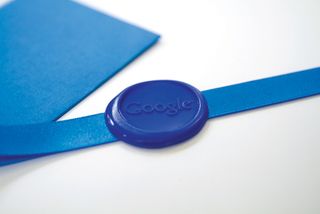
He continues: "We look at people doing incredibly innovative and interesting things. For me, it's everything: the award shows, the stuff being shared on the Twitter-sphere, the blogger-sphere; everywhere."
"The work says so much you don't have to ask anything about it. You look at the production values, the design, the aesthetic, the back-end functionality. It almost pre-qualifies somebody, whether you're doing it as an individual, a company, or whatever."
One way to catch the attention of Creative Lab is to create something interesting on Google's products and platforms. "We geek out on that stuff," Vranakis adds. "A lot of the time we'll be looking at these people, thinking: what would happen if you gave them a bunch of our toys and the brief and objective we're trying to meet?"
Of course, working with the world's biggest digital client comes with its own, unique set of challenges. For a start, everything happens fast. Incredibly fast.
To keep up with the company's rapid conveyor belt of new products and technology, Creative Lab's groundbreaking campaigns are produced under an intense, streamlined strategy that sees creatives focusing on the end stage of product development. Referred to in-house as 'jump to the end', it's a thinking-through-execution policy and often means marketing is developed before the final product.
It's an exciting, collaborative environment that sometimes necessitates a new mindset for Google's creative partners. But the relationship also has another dimension: Creative Lab's powerful creative and technical expertise often puts the client in the driving seat. And that can take agencies out of their comfort zone.
New way of thinking
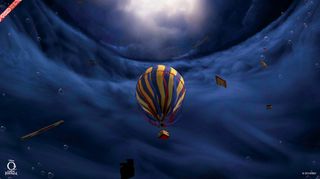
"Normally we're the experts on a technical level and our clients are following our advice," says Unit9 director Anrick Bregman, who last year collaborated with Google Chrome and Disney to produce Find Your Way To Oz, a multi-award-winning interactive trailer for Disney's fantasy feature film Oz: The Great and The Powerful.
He continues: "It's rare you have access to the perfectionists who know the platform you're building on so intimately. They were going deeper and deeper into our code and providing ways we could make it more efficient. It's a bit like someone going to your house when it's a mess – you wish you had time to vacuum," he laughs. "But they were great partners, thinking alongside us. They were warning us about problems we hadn't yet thought of. That solves things as you go. It's somebody who adds to your team."

"It's not about whether we can work with people," Vranakis adds. "It's more: are they open to working in a slightly different way? We're pushing technology to the limit. A lot of the time things have never been done before. Sometimes we just can't get them to work, but you go back in the next day and eventually you get there."
At Creative Lab, there's no room for ego. Innovation is the product of a two-way relationship: "It's all about humility, humility, humility," says Vranakis. "Our whole thing is to be like sponges. We soak up as much as we can from the creative community, and hope to inspire them with some of the work we do."
For multidisciplined designer and art director Melvina Wong, a recent opportunity to work with Google arrived via an invitation from Mill+, the studio counterpart of global VFX agency The Mill, which purports to pool the power of its global parent agency with individual design and animation directors. She's been freelancing on the LA commercial and advertising circuit for the last five years. "A producer at The Mill contacted me to see whether I'd be interested in working with them for a month or two," she recalls, "and the timing was perfect."

Briefed to help design and animate a bespoke set of logos for Google's Play Your Heart Out official logo commercial, Wong worked with the Mill+ team to bring the spot to life. It aired on ESPN during the 2014 FIFA World Cup and racked up over six million views on YouTube in May alone. "Google doesn't even know I exist because I was such a small part of one of their plethoras of visual operations, but I'm very proud that I can list them as one of my clients."
And Wong isn't the only one. Times are indeed changing: with global clients increasingly collaborating directly with smaller studios, last year's launch of Mill+ reflects the shifting landscape of the design industry. "There's definitely more of a trend of large companies mimicking small companies, rather than the other way round at the moment," says ManvsMachine's Mike Alderson.
"I don't think it's going to be a radical revolution that happens in the next five or 10 years where small companies are taking over the world, but I think it can only get better as more people of a similar age to us move into positions of power in big brands," he continues. "We're very proud to work directly with these big brands, being a company of our size."
Words: Julia Sagar
Opening image: Polynoid - MTV/Idol
This article first appeared in Computer Arts issue 231, Self-Promo to Suit You: 100 pages on how to win more design work by playing to the strengths of your personality – and much more. Get your copy of Computer Arts issue 231 here.

Get 10 free issue of Computer Arts!
We're offering all overseas readers of Computer Arts and Creative Bloq the opportunity to get up to an incredible 10 free issues of Computer Arts magazine with a two-year subscription.
Simply follow the link to the CA subs page, select either Europe or Rest of World from the drop-down Delivery Region menu, and choose 'Credit/Debit Card or PayPal 2 Year' from the three available options.
But hurry – you've only got until the end of October to take advantage of this incredible subs offer for the world's leading design magazine. Want to know more? You'll find all the info you need right here.

Thank you for reading 5 articles this month* Join now for unlimited access
Enjoy your first month for just £1 / $1 / €1
*Read 5 free articles per month without a subscription

Join now for unlimited access
Try first month for just £1 / $1 / €1

Julia is editor-in-chief, retail at Future Ltd, where she works in e-commerce across a number of consumer lifestyle brands. A former editor of design website Creative Bloq, she’s also worked on a variety of print titles, and was part of the team that launched consumer tech website TechRadar. She's been writing about art, design and technology for over 15 years.
